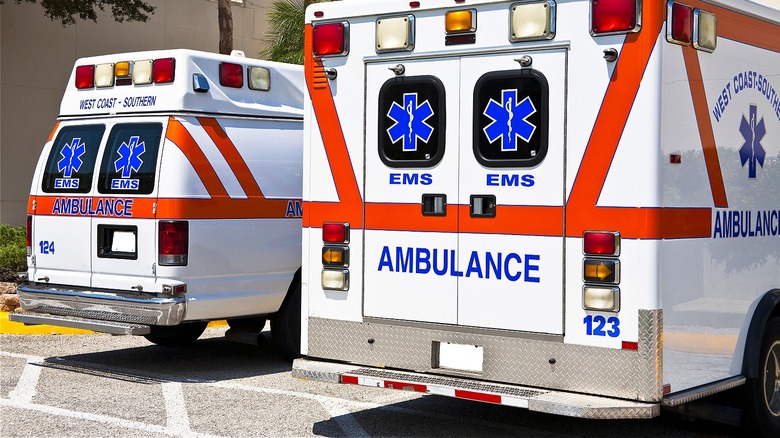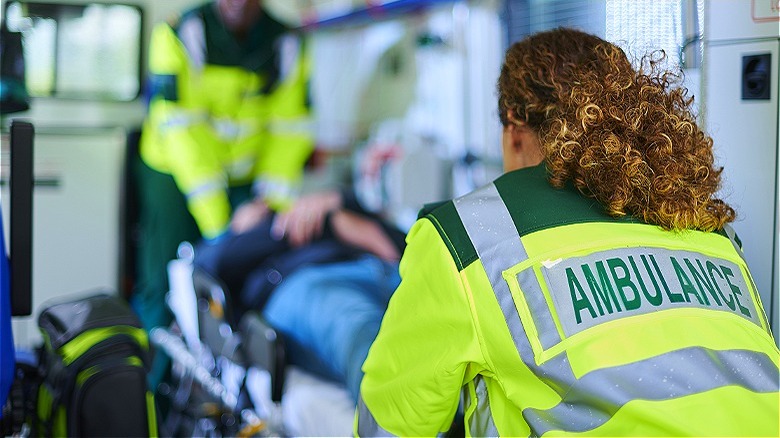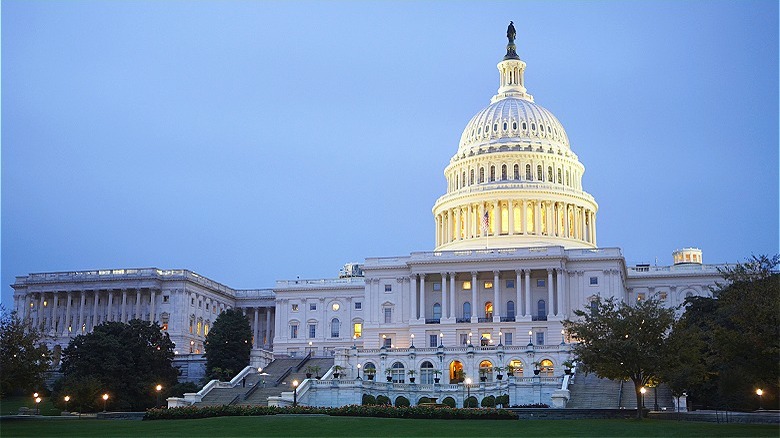The Price Of Riding In An Ambulance Could Seriously Set You Back
Perhaps the last thing you want to worry about during a medical emergency is cost. Yet, given the state of today's medical industry, as well as the exorbitant costs of medical care and insurance in the United Staes, the cost has increasingly become a factor in whether or not people seek medical help. However, in cases of medical emergencies like, say, something requiring an ambulance, you don't always have the ability to (nor should you have to be worrying about how to) decide on receiving care. Despite this, an ambulance ride can frequently be deemed an out-of-network service, which can leave you worrying about excessive medical expenses (and, eventually, what might happen if you don't pay your medical bills), in addition to your medical concerns.
A Kaiser Family Foundation report found that an estimated 3 million privately insured people use ambulances every year. In fact, one in 10 emergency room visits for privately insured people is via an ambulance, with local fire, rescue, and government agencies accounting for 62% of those rides. However, per 2018 data, 51% of these emergency ambulance rides (and 39% of non-emergency rides) counted as out-of-network and, therefore, resulted in additional charges for the patient.
While you might be thinking an ambulance ride couldn't possibly cost very much, you might be surprised. According to data from FAIR Health, an ambulance ride in the U.S. requiring basic life support services cost $940 in 2020, which was a 17.5% increase over 2017. However, for those requiring more advanced life support services in 2020, the ambulance bill alone was $1,277.
Medical necessity and ambulance services
Much of the debate over whether insurance will cover your ambulance ride or not comes down to whether or not the ride is deemed medically necessary by your provider. As Ken Perry, an emergency medicine doctor, explained to Forbes, "The best way to think about medical necessity is if you need care even before you get to the hospital. Difficulty breathing, chest pain, or other life-threatening conditions that require assistance by a paramedic before arriving at the hospital will most likely be covered." Of course, your ability to transport yourself is ultimately a subjective experience — one unlikely to be understood by your insurance company. This, along with physical access to reliable transportation, can make determining something like medical necessity incredibly difficult in the moment. Regardless of your circumstances, though, an insurance company will more than likely choose to bill you for the ambulance ride.
Another factor in the out-of-network issue is the fact that the patient themself usually isn't the one requesting the ambulance, and most 9-1-1 calls don't include insurance information before calling for ambulance services. This leaves dispatchers calling for emergency responders (which can include public emergency response, hospital ambulance services, or private ambulance companies), but the patient is ultimately left with the bill even if it isn't covered by their insurance. Ambulances actually have the highest out-of-network billing rate in the entire country, with insured patients spending around $129 million a year on surprise ambulance bills. Even worse, in seven states, more than two-thirds of all emergency ground ambulance transports can result in a surprise bill.
Legislation addressing the cost of ambulances
If you're wondering why there aren't today any federal protections for consumers when it comes to ambulance ride bills, there almost were. The federal government actually passed legislation meant to address surprise medical charges in late 2020. However, this law, known as the No Surprises Act, included provisions for air ambulance bills but didn't specify ground ambulance services. This means that even though the bill banned most surprise medical bills beginning in 2022, ambulance charges are still affecting consumers who use the service. In connection with this initial bill, the Advisory Committee on Ground Ambulance and Patient Billing was formed. Despite the group having had three public meetings in 2023, there has been no substantive progress on the topic.
Even worse, as this issue is left without resolution, the costs continue. Prior to the bill, monitoring hub Peterson-KFF Health System Tracker noted that more than two-thirds of all emergency ground ambulance transports in seven states (California, Colorado, Florida, Illinois, Texas, Washington, and Wisconsin) resulted in surprise bills. With that in mind, 10 states enacted laws to protect consumers from out-of-network ambulance charges. Unfortunately, these protections mainly apply to those with state-regulated insurance and health care programs, meaning those with private insurance (which is 60% of all Americans) are still left without necessary protections.
This makes it more likely than ever that consumers will receive increasingly large, unexpected bills for the use of ambulance services, especially considering the rise of profit-focused private equity firm ownership in emergency ambulance transportation services. This ownership model also increases the likelihood of stronger debt collection tactics and lawsuits against patients who can't afford to pay their medical bills.


